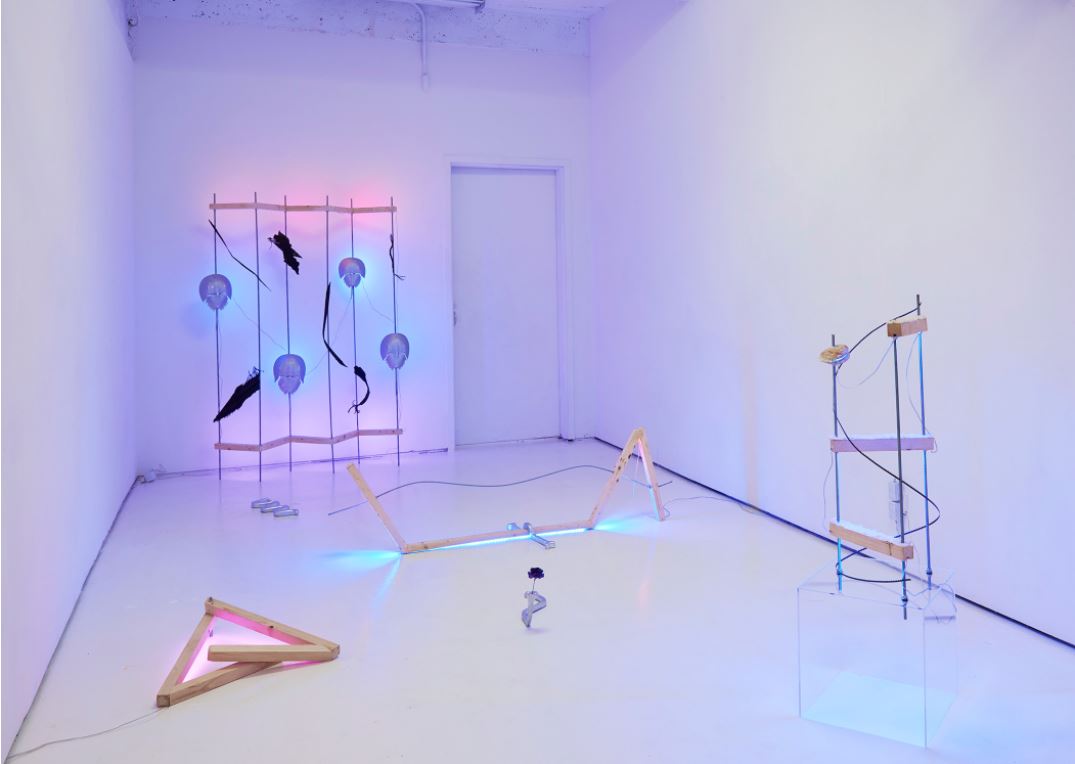Lizzie Wright’s approach to art-making is one where ideas appear to come together from different directions and create uncanny, yet rhapsodic, results. Using materials like ceramic and LED lights, elements in her wall works and sculptures converse and contrast, merging the old and the new, the natural and the synthetic together into new forms.
Since graduating from Yale in 2008, Wright has been actively showing her works that are partially informed by her experiences growing up in and around history museums. When she was young, her mother was involved with a natural history museum and planetarium. Later, she herself worked at the New York Historical Society. The concerns that surround the display of historic objects, such as lighting and their preservation, have noticeable traces in many of her works. These ideas have evolved into cast specimens or found fragments combined with washes of light glowing from LEDs. Her works often hang on walls or built apparatuses, sometimes they are placed on bases of concrete. Her work is light, heavy, transparent, and opaque in many instances all at the same time. The work gets into the places where the experience of the present moment intersects with concepts of the past (sometimes ancient) as well as the future.

wood, threaded rod and hardware, painted horseshoe crab shells, tire treads, LED lights
4’ X 13” X 6’.
In her first solo show in 2015 at Essex Flowers titled Timed Entry, Wright installed a collection of objects made from wood, LEDs, painted plaster, Plexiglas, and slip-cast horseshoe crab shells. Wright’s museum vernacular comes across through her use of components that address the materials of display and viewing. In the work Sex on the Beach (2015), for example, the cast horseshoe crab shells hang from metal rods spanning two zig-zagging shapes of wood. Shredded pieces of tire treads also hang from the rods. The work reveals and displays the items assembled together, bathed, and framed in their own light. The horseshoe crab shells point to the preservation of biological specimens, while the shredded tire suggests pieces found as archaeological evidence; as artifacts bearing an imprint of the past.
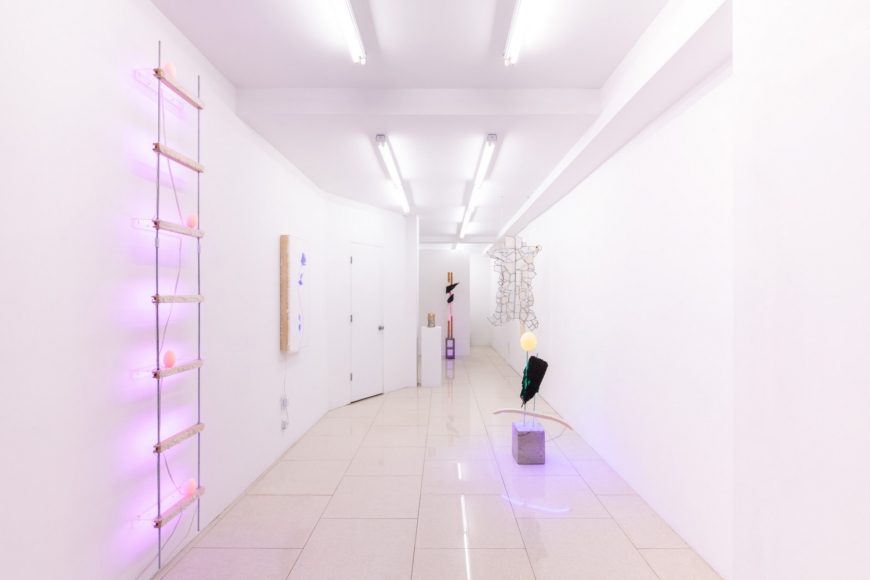
In her 2017 solo show at Rawson Projects, Log Cabin Light, Wright continued these explorations. There, her work was installed along the long wall and floor of the space, with hues of lavender and soft pink emitting from them; offset by concrete, wood, ostrich eggs, and the black rubber tire shreds. Accompanying these objects were also glazed ceramic stacks of pancakes: in gold, black, and silver. While many of the works here shared an aesthetic, sculptural kinship with those from her previous show, there were new standouts including a pair of works depicting images of flowers. The pieces Pink Flower-Long Stem and Blue Flower, Silver Lining were both made by cutting out the shape of a flower from the face of a hollow box form. LEDs were placed inside so that the light emitted from the cut-out flower. Small swaths of fur were attached to the sides of the objects as well. The natural, artificial, and staged qualities of these two works would seem to arrest the viewer’s ability to identify them as objects or pictures.
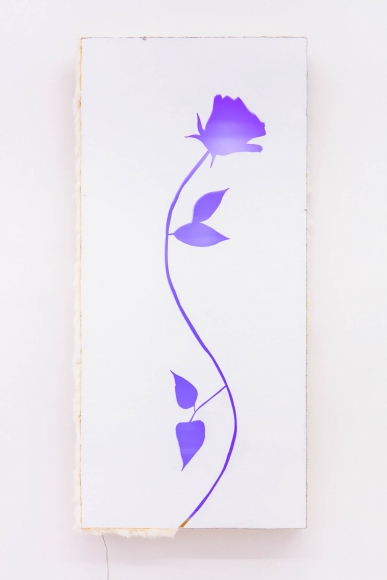
Wood, LED lights, copper foil and solder, fur
40 x 18 1/4 x 3 1/2 inches

Wood, LED lights, fur
48 x 8 x 3 inches
Wright’s show in 2019 at Good Children Gallery In New Orleans brought several of these conceptual concerns full circle. The title of the show came out of her experience with a pet turtle she had as a young child, whose shell she still keeps on her dresser. As a species aged more than 60 million years old, the turtle shell seems to operate as both a personal and prehistoric memory in her work; bridging the existential with the historic. In the show, the shells could be found in the works Sexoticonce and Pet Turtle. In the former, a painted cast turtle shell was transformed into a wall sconce. In the latter, a pair of turtle shells hung on a grid-like wood and metal frame with LEDs again casting light from the backs of the shells, this time blue.
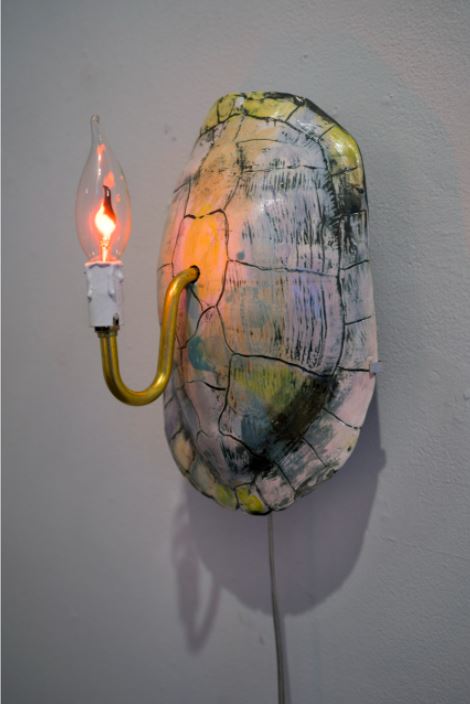
Glazed ceramic, brass, chandelier light and hardware, flickering bulb, plexi, wood, metal hardware
12” X 8” X 8”
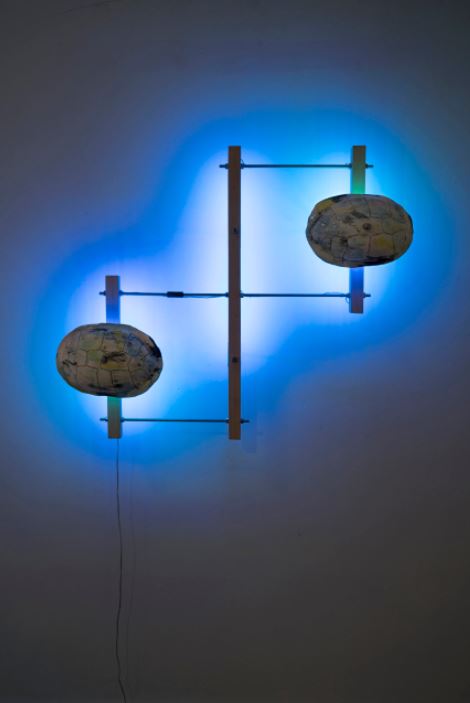
Glazed ceramics, LED lights and hardware, basswood, acrylic, threaded rod, and hardware
36” X 32” X 10”, 2018
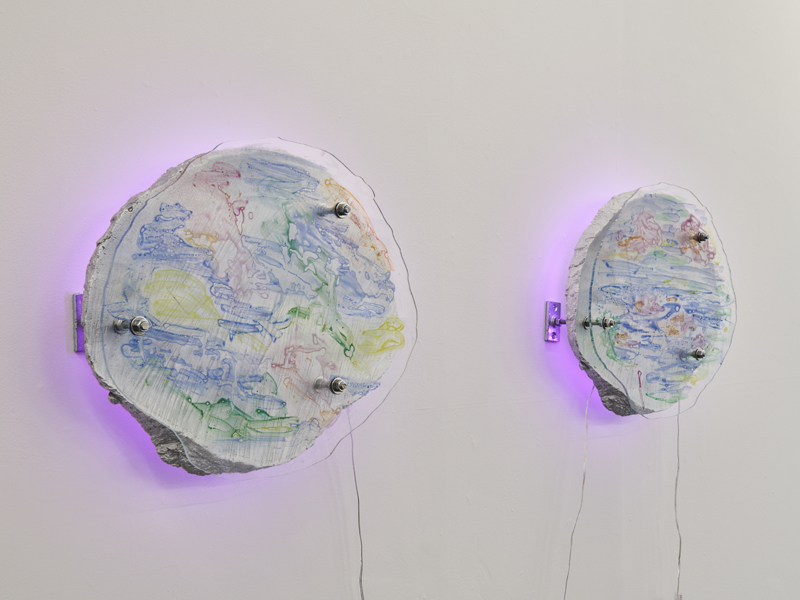
6′ x 17″ x 5″
Painted UltraCal casts of tree bisects, glass paint on acrylic, LEDs, plywood, metal
2020
Recent work sees Wright experimenting with casts of bisected tree sections. Titled Souvenirs, the work, on one hand, seems to reference counting the tree’s age by exposing its number of annual growth rings. On the other, the work is an aesthetic object in its own right, with the LEDs and cut-out pieces of Plexi attached to the sections. The sections and Plexi are painted with different colors. Through the colored Plexi, chain-saw marks from the original object appear almost like drawings of parallel lines. Like most of Wright’s objects, the work functions as both a document of recorded evidence and as evidence of an aesthetic encounter at the same time.
All images are copyright of the artist.
Lizzie Wright
http://www.lizziewright.net

